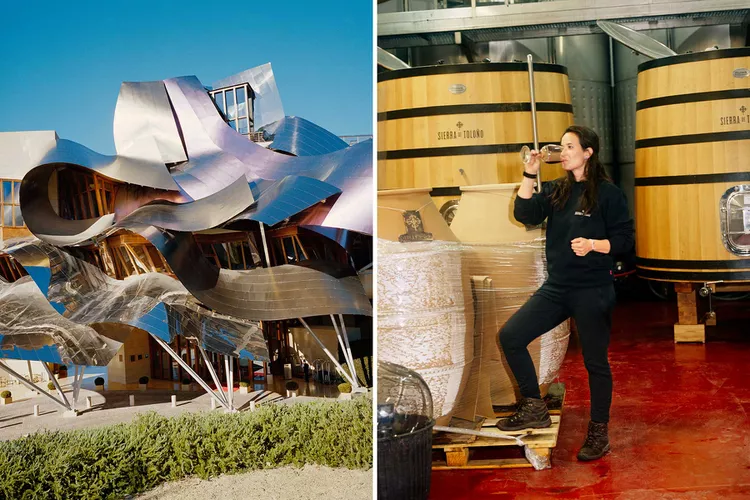Historical Significance
Rioja, Spain’s most famous wine region, has long been known for its bold, oaky reds. However, a fresh spirit is taking hold. In Rioja, where winemaking dates back to the 11th century B.C. during the age of the Phoenicians, ancient history is everywhere. If you drive along the Ebro River, which meanders through Rioja and demarcates part of the Basque Country, you will pass a series of large Neolithic constructions known as dolmens. Upon reaching the town of Laguardia, you can visit the ruins of an Iron Age village that met its demise in a massacre during the third century B.C. And of course, you will find hundreds of vineyards that make this Spain’s most prestigious wine region.
Modern Influences
Age is significant in Rioja wines. Since the 1930s, they have been categorized based on the duration of barrel aging: Crianza, Reserva, and Gran Reserva, aged for two, three, and five years, respectively. Traditionally, the emphasis was on oak maturation; however, terroir—the blend of soil, climate, and unique character—was often overlooked.
Currently, tastes are evolving. There is a mounting desire among producers to shake off Rioja’s old image, offering younger consumers fresher, fruitier wines with lower alcohol content and, importantly, less oak influence. Consequently, changes in the wine culture of Rioja are underway.
New Generation of Vintners
Last year, tensions escalated when a group of 40 producers from the Basque side of the river petitioned the EU to break away from the Rioja appellation. They aimed to label their wines based on geographic origin rather than age. This movement stunned the industry, echoing a wine version of Brexit. Although the Basque producers later retracted their request, it signaled a shift in Rioja’s identity.

During my visit to the region, I had the opportunity to discover the innovative spirit among various vintners. For instance, Sandra Bravo of Sierra de Toloño exemplifies Rioja’s revolutionary spirit. Although she operates on the Basque side, she refuses to categorize her wines by oak aging. While tasting her fresh, vibrant wines—distinct from the heavier reds that often represent the region—Bravo suggested that a revolution needs to come from within the industry.
At Bodegas Pujanza in Laguardia, I encountered similar sentiments. Lorena Corbacho, the winery’s export director, explained their approach of eliminating age-based classifications. “We don’t ever use Crianza, Reserva, and Gran Reserva. That pertains only to the barrel,” she stated, highlighting a commitment to continuously reduce oak aging.

In Haro, I enjoyed exploring the wineries of Barrio de la Estación, which connects Rioja to Bordeaux and showcased the historical significance of the region. While some producers maintain traditional practices, others embrace modernity.
At La Rioja Alta, I savored a long-aged Gran Reserva alongside lamb chops grilled over an open fire, while Guillermo de Aranzabal Bittner expressed his commitment to Gran Reservas, emphasizing, “By the time we release our wine, the fashions will have changed.”
Conversely, R. López de Heredia offers a blend of tradition and innovation. Their courtyard, designed by Zaha Hadid, perfectly contrasts with the classic winemaking techniques practiced inside.
Arturo de Miguel of Artuke challenges the notions of old versus new styles. By adhering to methods from pre-phylloxera France, he considers himself part of the traditional wine-making lineage.

Jade Gross, initially a chef in San Sebastián, has transitioned to winemaking in Rioja. Her goals align with the younger generation’s desire to continue evolving the philosophy and practices of winemaking in the region.
In conclusion, Rioja is undergoing a transformative journey. With a blend of modernity and tradition, the future of winemaking in this region looks promising, filled with invigorating wines that reflect the innovative spirit of its passionate vintners.





